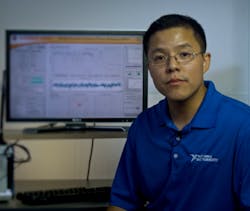With commercial wireless technologies like cellular, Wi-Fi and Bluetooth increasingly being used in industrial environments, advances on the consumer side are making their way more quickly to operators on the plant floor or technicians in remote industrial locations. Now, a partnership between National Instruments and Nokia is using industrial-strength rapid-prototyping technology to more quickly create the next-generation cellular wireless network.
NI is working with Nokia’s Networks business to collaborate on advanced research related to fifth-generation (5G) wireless technologies, such as exploring peak data rates and cell-edge rates in excess of 10 Gbps and 100 Mbps, respectively. By using NI’s integrated hardware and software platform, Nokia plans to expedite its research and rapidly demonstrate the viability of high-frequency millimeter wave as an option for 5G radio access technology.
“Our experimental 5G proof-of-concept system will be implemented using NI’s LabVIEW and PXI baseband modules, which is the state-of-art experimental system for rapid prototyping of 5G air interface available today,” said Lauri Oksanen, vice president of research and technology at Nokia.
NI is collaborating with several top researchers focused on 5G wireless communications. The graphical system design approach of NI LabVIEW software combines with NI’s software defined radio (SDR) hardware to give researchers the ability to innovate faster. “Using this approach, engineers can significantly reduce the time from theory to results by testing their designs in a real-world environment,” said Eric Starkloff, NI executive vice president of global sales and marketing. “Our software-defined platform, based on LabVIEW and PXI, is ideal for researching and prototyping standards such as 5G.”
According to an NI tutorial on the topic, network service providers are currently rolling out fourth-generation (4G) networks based on Long Term Evolution (LTE). LTE offers significant upgrades over 3G in terms of data throughput, with up to five to six times faster peak rates. Most service providers plan to transition to LTE-Advanced, or 4.5G, which is expected to double the available bandwidth from LTE. With LTE and LTE-Advanced, wireless data consumers now have a communication technology that rivals current Wi-Fi in terms of user experience.
“On the surface, future wireless data capabilities along the LTE trajectory appear to approach parity with Wi-Fi from a user experience perspective, ostensibly reducing or mitigating the need for quantum leaps in increased bandwidth,” says James Kimery, director of marketing for RF, communications and SDR initiatives at National Instruments. “However, with the rapid adoption of smart devices such as smartphones, tablets and even fablets, network capacity and bandwidth are being consumed at accelerated rates…. Capacity is, in effect, a function of bandwidth. More bits transmitted faster free up spectrum for other users and their data demands. Doubling the data rate effectively increases the capacity by 2 times. Therefore, the primary motivation for investments in 5G research is to increase network capacity via increased bandwidth and to avoid a capacity shortage.”
National Instruments has been working with wireless researchers for a number of years through the RF/Communications Lead User program, an idea of National Instruments’ CEO and founder, Dr. James Truchard. Truchard believes that a new design paradigm is needed for research not just in wireless, but across many different areas.
“The tools used in research to transition from design to simulation to prototype have not really evolved over the last 20 years like so many technologies that have improved our everyday life,” says Kimery. That’s why National Instruments focuses on a graphical system design approach to accelerate the process from design to simulation to prototype. “The combination of this approach with tight hardware and software integration enables researchers to focus on their area of expertise rather than having to struggle with disparate tools and technologies that can take months and years to integrate into a working prototype,” he says.
In a video from NI, Ian Wong, group manager for NI’s advanced wireless research, explains how NI SDR hardware and Labview software are used to design, simulate and deploy real-time wireless communications systems.

